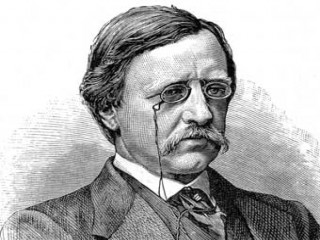
Adolf Erik Nordenskjöld biography
Date of birth : 1832-11-18
Date of death : 1901-08-12
Birthplace : Helsinki, Finland
Nationality : Finnish
Category : Science and Technology
Last modified : 2011-01-14
Credited as : Polar explorer, mineralogist,
The Finnish-Swedish polar explorer and mineralogist Baron Nils Adolf Erik Nordenskjöld(1832-1901) was the first to make a ship voyage from Scandinavia to Alaska through the Northeast Passage.
Adolf Erik Nordenskjöld was born on Nov. 18, 1832, in Helsinki, the third of seven children of Nils Gustaf Nordenskjöld, chief of the Finnish mining department and a member of an old Swedish family that had settled in Finland. The boy took an early interest in natural history and mineralogy. He specialized in mineralogy and geology and collected minerals in parts of Finland and Russia while attending the University of Helsinki, where he obtained his degree in 1855. During his studies at the university, Nordenskjöld had developed certain Swedish and Western sympathies which implied criticism of Russian political control in Finland. As a result, he incurred the displeasure of the authorities, and in 1856 he lost his mining office position and was forced to leave the country. He finally settled in Sweden in 1858, where he took employment at the National Museum of Natural History in Stockholm.
Nordenskjöld's first polar experience was in 1858 with the Swedish geologist Otto Torell to Spitsbergen. He followed this with other Spitsbergen trips: in 1861 with Torell, and as leader in 1864, 1868, and 1872-1873. Through these expeditions he made fundamental contributions to the knowledge of geography of the area. On the 1868 expedition, in the iron steamer Sofia, he went farther north (82° 42'N) in the Eastern Hemisphere than anyone ever had. Two years later, Nordenskjöld led an expedition to the west-central coast of Greenland to collect minerals and fossils and study the inland ice. The visit stimulated his interest in exploring the interior of Greenland, where he believed there might be an ice-free forested area. Such an exploration took place in 1883, when two of Nordenskjöld's Lapp companions reached the central part of the ice cap, but they did not find an ice-free area.
Then Nordenskjöld turned his attentions to what was to become his major polar achievement—the making of the Northeast Passage. In the years before that trip, he had made two preliminary voyages, pioneering the use of ships on the northern sea route for trade with Russia. In 1875-1876 he accomplished passage of the Kara Sea to the mouth of the Yenisei River in Siberia, and this was repeated in 1876-1877. On June 22, 1878, Nordenskjöld sailed from Karlskrona, Sweden, on the steam vessel Vega, accompanied on part of its voyage by three other ships. The mouth of the Yenisei was reached on August 6, Cape Chelyuskin on August 19, and the Lena River on August 27. The ship was frozen into the sea on September 27 near Kolyuchin Bay, about 100 miles from the Bering Strait, and did not make the passage until July 1879. Before returning to Sweden via Japan, the Suez Canal, and the Mediterranean, Nordenskjöld visited parts of Alaska. He was made a baron by King Oscar on his return to Stockholm in 1880. In 1893 he was elected to the Swedish Academy.
Nordenskjöld's later years were spent studying mineralogy and in gathering together old hand-drawn maps and charts. He had these published in two volumes entitled Periplus (trans. 1897). He died at Dalbijo on Aug. 12, 1901, a much-respected scientist and explorer.
A biography of Nordenskjöld in English is in Alexander Leslie, The Arctic Voyages of Adolf Eric Nordenskiold, 1858-1879 (1879), and in Sten Lindroth, ed., Swedish Men of Science, 1650-1950 (1952).
Hèakli, Esko, A.E. Nordenskjöld, a scientist and his library, Helsinki: Helsinki University Library, 1980.
















